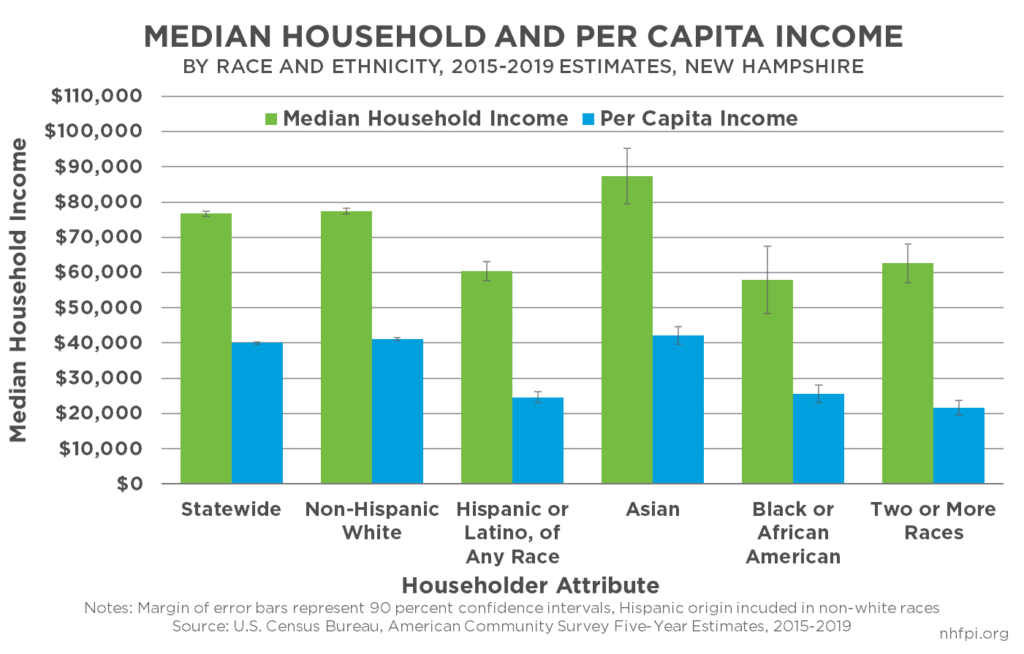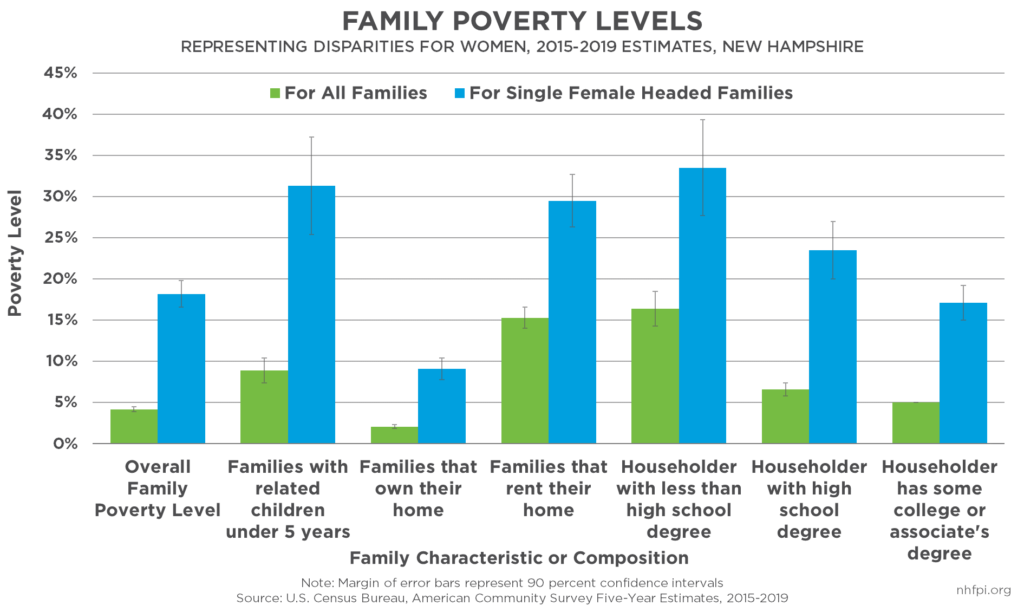Estimates from the U.S. Census Bureau’s annual American Community Survey provide insights into the economic conditions facing, and resources available to, New Hampshire residents. Estimates released in December 2020 average responses over the five-year period from 2015 to 2019, which allows for more measurement certainty among smaller population groups than the annual data.
Income Levels by Demographic Group
New Hampshire’s median household income during the 2015-2019 period was $76,768, and per capita income was $40,003. These estimates varied substantially between households with different family compositions, householders from various racial and ethnic groups, and other demographic factors. For groups where reliable data were available, households where the householder identified their ethnicity as Hispanic or Latino, or their race as Black or African American or Two or More Races, had much lower median household incomes than the statewide median. These same groups also had relatively lower per capita incomes.
Households comprised of families where only one adult without a spouse was present faced lower median household incomes than the statewide estimates over the 2015-2019 period. Median household incomes also varied based on the age of the householder. Households with householders under the age of 25 and over the age of 64 experienced lower median household incomes than the statewide levels.
Poverty Among Individuals and Families
Poverty is defined by the federal government as having an income below a certain level based on the size and composition of the household. For 2019, the federal poverty thresholds were less than $13,300 for an individual under age 65, $17,622 for a single adult under 65 with one child, and $25,926 for two adults with two children. The overall poverty rate for individuals in New Hampshire for the 2015-2019 period was 7.9 percent, and the overall poverty rate for families during this period was 4.6 percent.
Poverty levels varied among different racial and ethnic groups in New Hampshire. Granite Staters who identified their ethnicity as Hispanic or Latino, or race as Black or African American or Two or More Races, experienced significantly higher poverty levels than the population overall. Additionally, individuals with less than a high school degree or equivalent, and people who were unemployed or who worked part-time all faced elevated levels of poverty. Family households headed by Hispanic or Latino, Black or African American, and other individuals from racial or ethnic minority groups experienced higher levels of poverty. Families with children, and families who rent their homes, also faced higher poverty rates.
Disparities for Women and Certain Family Compositions
Women and certain family groups had lower median household incomes and higher levels of poverty over the 2015-2019 period. Single adult households where a spouse was not present had lower median incomes overall, but single female-headed households experienced lower estimated incomes than single male-headed households. These trends continued for households comprised of individual adults.
Poverty levels were elevated in nearly all cases for single female-headed families. Single female-headed families faced higher levels of poverty regardless of their identified race, ethnicity, number of children, education level, work status, or home ownership status compared to the overall level for all families.




